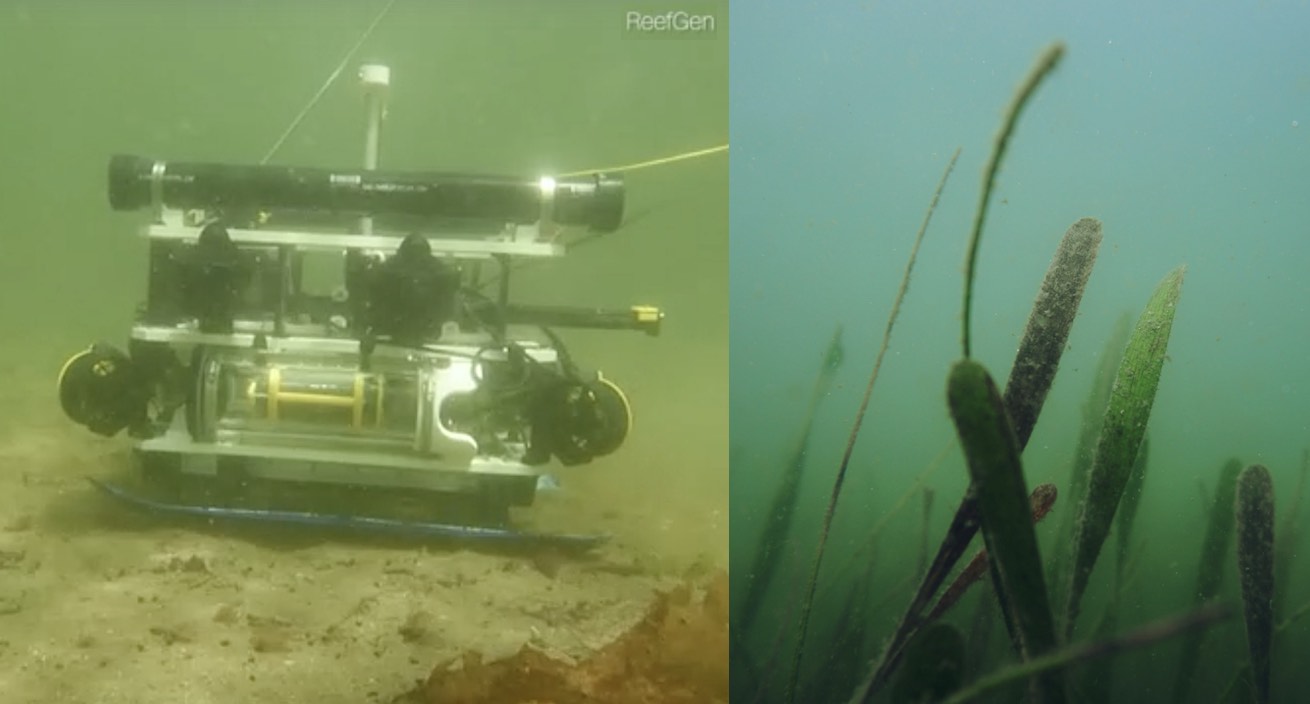
One of the least respected but most important ecosystems on Earth are seagrass meadows, and a pioneering robotic solution is helping marine scientists restore these underwater gardens.
The ReefGen Grasshopper can plant dozens of seagrass seeds per minute. Not only is this faster than a human diver, but much safer as well.
It works by injecting a tiny slurry of sediment wrapped around the seagrass seed into the seafloor. After covering a growing plot of four seeds, the robot ‘hops’ about 30 centimeters away and starts again.
Despite covering a minuscule portion of the seafloor, seagrass meadows are estimated to hold 35-times more carbon than terrestrial forests—amounting to around 18% of the total carbon stock of the world’s oceans.
ReefGen’s founder Tom Chi dreamed up the idea after watching the degradation of coral reefs on his home island in Hawaii. The first iteration of the robot set coral ‘plugs’ onto existing reefs to help regrow them, but the technology was prohibitively expensive for wide-scale use.
Now however, broader selections of off-the-shelf parts have driven down the costs of manufacturing and maintaining underwater robots, according to Chris Oakes, CEO of ReefGen.
“Manual planting works, but robots are really good when things are dull, dirty, dangerous, or distant—the four Ds,” Oakes told CNN, adding that at the moment, Grasshopper is piloted with a controller by a human on the surface.
“Right now, we’re focused on the planting, the biology, and the mechanical aspects, once we’re confident that that’s all designed the right way, we will overlay more semi-autonomous features like navigation, so you don’t actually have to pilot it,” he said.
STORIES LIKE THIS: Scientists Work to Turn the Tide of Oyster and Seagrass Decline in Chesapeake Bay, Often by Hand
ReefGen has been able to not only expand into restoration of seagrass meadows, but also see its robots used in oceans around the world. This July, Grasshopper planted 25,000 seeds in Wales. In October, ReefGen teamed up with the University of North Carolina (UNC) Institute of Marine Sciences to test various seed replanting methods out on the state’s declining seagrass meadows.
MORE GOOD IDEAS FROM ROBOTICS: Chinese Doctor Removes Patient’s Lung Tumor Using Robot from 3,000 Miles Away
Oakes says that as cool and “flashy” as a robotic solution might seem, the most important factor in its success will be the long-term monitoring of the fields it’s replanting. Are they growing to maturity, are the seedlings dying off before then, will they live long enough to seed and germinate fields of their own, how do fields it plants compare to fields planted by hand?
SHARE This Pioneering Underwater Robot Helping To Restore Our Seas…




















